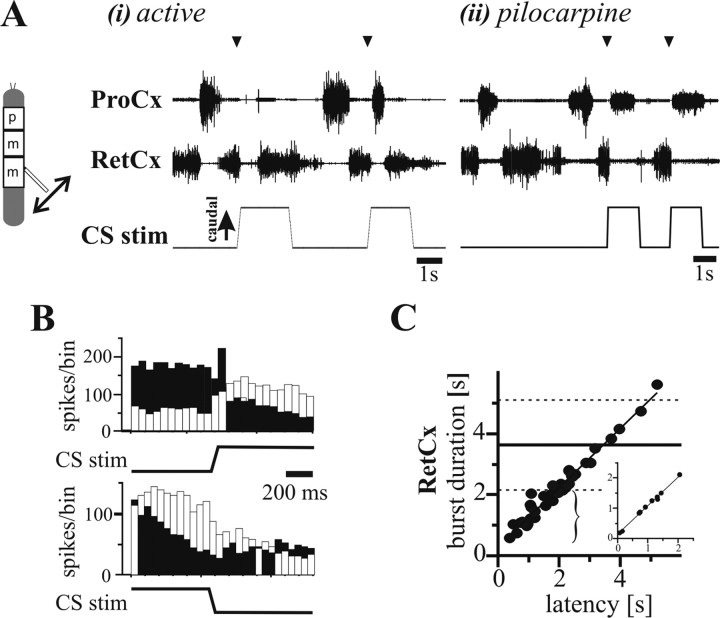Figure 3.
Reversed effect of load signals on ThC-joint motoneuron activity in the metathoracic segment. A, Extracellular recordings from ProCx (top traces) and RetCx (middle traces) nerves during stimulation of load sensors of the hindleg (bottom traces) in experimental animals activated by either tactile stimulation (i) or 5 × 10−4 m pilocarpine (ii). Stimulation of load sensors induced a transition from RetCx to ProCx activity in both conditions (arrowheads). B, PST histograms (bin width, 50 ms) illustrating that, in the metathoracic segment, ProCx activity (white bars) increased and RetCx activity (black bars) decreased during CS stimulation by caudal bending of the femur (top histogram; n = 16) in one tactilely activated stick insect. On average, rostral bending of the femur does not show stimulation-related changes in ThC-joint motoneuron activity (bottom histogram; n = 16). C, Plot of RetCx burst duration in which the stimulus was applied versus the latency between burst onset and stimulation onset (N = 3 animals; n = 39; R2 = 0.96) in the pilocarpine-induced rhythmic preparation and in the tactilely activated animal (inset; n = 9; R2 = 0.99). Note that, when stimuli occur early in a RetCx burst, the burst was significantly shorter (bracket) than the control bursts. Horizontal lines indicate mean (solid line) ± SDs (dashed lines) of RetCx burst durations without stimuli (N = 3; n = 39).

